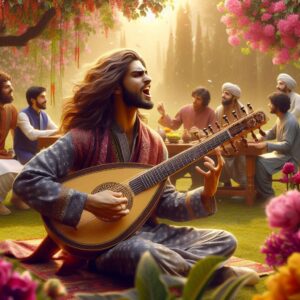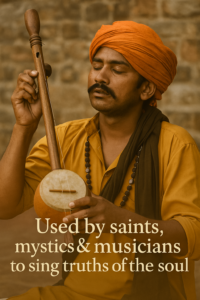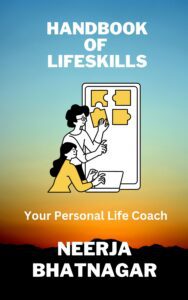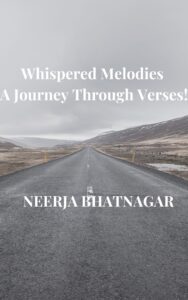 The Ektara, a simple yet profoundly expressive musical instrument, has resonated through the heart of Indian folk music for centuries, with its single string ( hence the name ek (one) tara (string) and humble design, it carries the power to evoke deep emotions and transport listeners to a world of melody, devotion, and storytelling. The Ektara has left an indelible mark on India’s rich musical heritage, often associated with wandering minstrels, saints, and Sufi mystics.
The Ektara, a simple yet profoundly expressive musical instrument, has resonated through the heart of Indian folk music for centuries, with its single string ( hence the name ek (one) tara (string) and humble design, it carries the power to evoke deep emotions and transport listeners to a world of melody, devotion, and storytelling. The Ektara has left an indelible mark on India’s rich musical heritage, often associated with wandering minstrels, saints, and Sufi mystics.
The Anatomy of Ektara
The Ektara consists of a resonator, traditionally made from a dried gourd, coconut shell, or wooden bowl, with a bamboo neck. A single string, stretched across the neck and plucked with the fingers, produces its characteristic sound. The tautness of the string can be adjusted by pressing the flexible neck, allowing the player to manipulate pitch and infuse each note with emotion. Despite its minimalistic design, the Ektara’s sound is deeply resonant and hauntingly beautiful.
The Ektara in Folk Traditions
The Ektara is widely used in the folk music traditions of various regions in India. It is particularly popular in:
- Baul Music of Bengal: The Bauls, mystical minstrels of Bengal, use the Ektara to accompany their soul-stirring songs about divine love and the human connection with the cosmos.
- Rajasthan’s Bhopa Community: The Bhopas, traditional storytellers and balladeers, use the Ektara to narrate tales of valou
 r, mythology, and devotion.
r, mythology, and devotion. - Punjab’s Sufi Tradition: Sufi singers, including the legendary Baba Bulleh Shah, have used the Ektara to convey spiritual messages through music.
- Maharashtra’s Varkari Tradition: Devotional singers in Maharashtra use the Ektara while singing abhangs (devotional songs) in praise of Lord Vitthal.
Hindu Saints and Scriptures on Ektara
Ektara finds a special mention in Hindu spiritual traditions as well. Several revered saints and bhakti poets used it as a medium to spread their teachings:
- Sant Kabir: The great 15th-century saint-poet Kabir, often depicted with an Ektara, sang verses promoting unity and devotion beyond religious divides.
- Tulsidas: The author of Ramcharitmanas was known to travel and sing his compositions, likely using simple instruments like the Ektara to reach the masses.
- Meerabai: The Rajput princess-turned-devotee of Krishna sang bhajans of divine love, often accompanied by the Ektara.
- Chaitanya Mahaprabhu: The proponent of the Bhakti movement in Bengal, he and his followers sang kirtans with instruments like the Ektara to spread Krishna consciousness.
The Hindu scriptures also emphasize music as a means of connecting with the divine. The Samaveda speaks of melodies as a way to reach higher consciousness, and instruments like the Ektara have been integral in devotional practices throughout history.
Symbolism and Spiritual Connection
Beyond being a musical instrument, the Ektara holds profound spiritual significance. Its single string symbolizes unity – the oneness of the soul with the divine. Mystics and saints have long used it as a medium to express their devotion and convey philosophical truths. It is an instrument of the people, often associated with simplicity, humility, and an unfiltered connection to the self.
Ektara in Contemporary Music
While deeply rooted in folk traditions, the Ektara has found its way into modern music. Indian musicians and composers have incorporated their earthy tones into contemporary and fusion genres, bringing this timeless instrument into mainstream awareness. Bollywood songs and indie music albums have experimented with their unique sound, preserving their legacy while adapting it for new audiences. Artists blending electronic beats with folk sounds have revived interest in the Ektara, bridging the gap between ancient devotion and modern musical expression.
Preserving the Legacy
With the rise of electronic and digital music, traditional instruments like the Ektara face the challenge of fading into obscurity. However, folk musicians, cultural festivals, and music enthusiasts continue to champion its significance. Efforts to document and revive traditional music forms, along with online platforms showcasing folk artists, play a crucial role in ensuring that the Ektara continues to be celebrated.
The Ektara, with its single yet powerful string, is more than just an instrument—it is a storyteller, a spiritual companion, and a bridge between tradition and modernity. From the saints of ancient India to contemporary fusion artists, its melodies continue to inspire generations. As we listen to its soulful tunes, we are reminded of the deep roots of Indian musical heritage and the timeless charm of folk traditions. Let us celebrate and preserve this one-stringed wonder, ensuring that its voice continues to echo through the ages.
Neerja Bhatnagar
Feel free to connect with me on social media to stay updated on more content like this!
Instagram | Facebook | YouTube |Twitter |Podcast |
I have written 3 solo books and 3 anthologies. You can buy my books on Amazon. If you are on Kindle Unlimited, you can read them for free. Pls, do check and share your reviews.




We once visited Poush Mela in Shantiniketan and bought an Ektara. I am in awe of this instrument and being an admirer of Baul music, I also want to learn to play Ektara someday.
Wow.. you have an Ektara! Pls do learn, let us have an online session then.